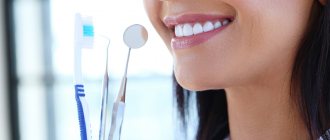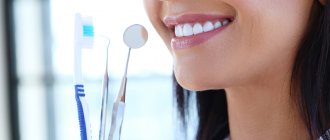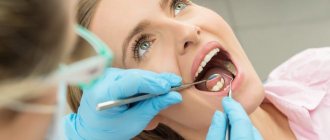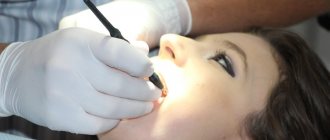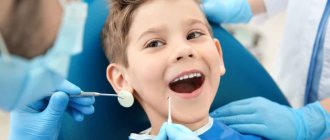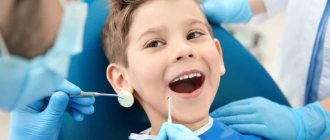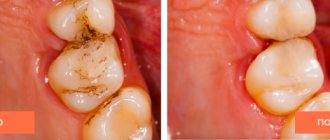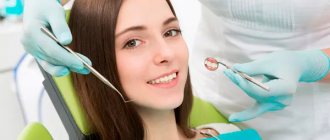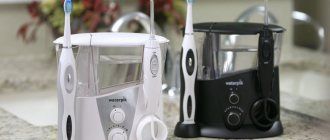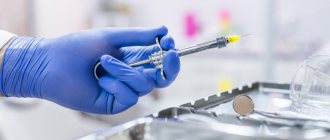You've probably come across the name of a dental service such as professional oral hygiene in an advertisement or on the Internet. And many people reasonably ask: why do you need to do oral hygiene at the dentist, if you can brush your teeth at home with a brush and toothpaste, use rinses and balms that are sold in the store?
The reason is quite simple: even regular and properly brushed teeth at home does not help to completely cleanse the oral cavity of soft plaque; it continues to accumulate and various pathogenic microorganisms actively multiply in it.
Their activities are fraught with the development of caries and inflammation of soft tissues. In addition, plaque can change the color of tooth enamel and teeth look unsightly.
professional oral hygiene procedure in dentistry helps to effectively remove plaque from dental surfaces and from all hard-to-reach places and thereby carry out effective prevention of almost all dental diseases
of dental oral hygiene include what methods are used to carry out the procedure? So that you can have answers to all these questions, we have prepared detailed material on the topic of professional dental and oral hygiene.
Dental and oral hygiene in dentistry: why is it so important to undergo the procedure regularly?
The main task of oral hygiene is to remove hard and soft plaque from the surfaces of the teeth, as well as other areas and areas of the mouth.
Regular and timely removal of dental plaque will be the best prevention of caries and other dental diseases. In addition, oral hygiene in dentistry contributes to:
- Formation of healthy strong teeth;
- Complete destruction of harmful microorganisms that live in large numbers in the human oral cavity;
- Prevention of periodontal and gastrointestinal diseases.
Professional dental and oral hygiene helps keep your teeth enamel in excellent condition - after brushing, your teeth become whiter and your smile looks attractive! Professional oral hygiene is especially recommended for people with bad habits: smokers, patients who abuse strong tea and coffee. The procedure is also indicated for people with poor immunity, because often malfunctions in the body’s immune system are expressed precisely in the appearance of caries and inflammation in the oral cavity.
Regular dental hygiene will ultimately result in significant savings on dental treatment costs.
Which is inevitable if the teeth are not properly cared for and are covered with a thick layer of plaque. So, professional oral hygiene is certainly not a waste of time and money; on the contrary, it is a valuable investment in your own health!
Indications and contraindications for professional oral hygiene in dentistry
Like any other medical procedure, dental and oral hygiene has its own indications and contraindications. Indications include:
- The presence of soft or hard plaque on the dental surfaces;
- Inflammatory process affecting the gums;
- Presence of tartar;
- Prevention of the development of caries and other dental diseases;
- Enamel pigmentation as a result of smoking, frequent consumption of tea and coffee.
USEFUL TO KNOW: The dental hygiene procedure also helps to brighten them. After all the activities, the teeth brighten by about one to two shades. This is already a good result, but if you need perfect whiteness, then it is better to use an additional service of modern dentistry after hygiene - professional whitening!
Professional dental and oral hygiene must be performed before prosthetics, implantation, orthodontic treatment using braces, installation of veneers and lumineers.
Also, the professional hygiene procedure can be part of complex therapy in the treatment of diseases such as periodontitis and periodontal disease. It is also recommended for expectant mothers to undergo professional cleaning of their teeth and oral cavity in dentistry: during pregnancy, the risks of caries increase significantly and high-quality oral hygiene will be an excellent prevention of this disease!
However, in some cases it is impossible to maintain oral and dental hygiene. For example, with stomatitis, general infectious diseases of the body in acute form. First, it will be necessary to eliminate these diseases and only then will it be possible to undergo the procedure.
Professional oral hygiene is not recommended in case of severe thinning of the enamel or erosion of the enamel coating of the teeth. Under such circumstances, the procedure can do more harm than good!
Indications and contraindications for professional dental and oral hygiene are determined at a dental appointment: the doctor will conduct an examination and tell you whether in your case it is possible to undergo the procedure immediately or whether preliminary measures will be needed that will improve the quality of hygiene and make it as safe as possible for you!
Ultrasound teeth cleaning method
The effect of ultrasound on tartar greatly facilitates the process of their removal. The procedure is faster and less tiring for the patient; it can be used to remove both subgingival and supragingival deposits. An important advantage of ultrasound is its antibacterial and antimicrobial effect on almost all microorganisms in the oral cavity.
The ultrasound waves used for cleaning are completely safe for the oral cavity. In addition, there are various attachments for the emitter that allow you to most effectively remove plaque and tartar even in the most difficult areas of the jaw. In this case, the tartar not only flakes off, but is also partially destroyed. What is important when removing it from periodontal pockets, since instrumental treatment of these places will be quite traumatic and painful for the patient. The gentle impact of ultrasound allows for a gentle effect on tooth root cement and enamel.
In parallel with ultrasonic vibrations, a stream of liquid is supplied to the oral cavity, washing away all remnants of stones and plaque from the interdental spaces and gum pockets.
Usually, just one session of professional teeth cleaning with an ultrasonic dentist is enough to remove all hard and soft deposits. In addition, this also causes partial lightening of hard tissues.
This cleaning method has practically no disadvantages, however, there are contraindications to ultrasonic teeth cleaning:
- A pacemaker installed in the patient;
- The presence of renal, pulmonary and liver failure;
- The presence of cardiovascular diseases in a severe stage;
- Extensive demineralization of enamel;
- Purulent diseases of periodontal and oral mucosa;
- Installed orthopedic structures, especially those made using metals;
- Multiple caries and its various complications with the formation of purulent exudate.
Ultrasonic teeth cleaning is very accessible in dentistry, which is explained by the following points:
- There are many companies offering devices for this method in dentistry;
- The cost of services using ultrasound is not very high. Many dentists offer professional teeth cleaning with ultrasound at a price from 1200 to 4000 rubles, the cost varies depending on the amount of work.
The effect of the ultrasonic cleaning procedure lasts for at least 1 year, provided the patient follows the recommendations for careful home dental care.
Oral hygiene in dentistry: what is included in the procedure?
In general, oral hygiene in dentistry is a complex event, which includes several procedures at once. Let's consider all these procedures in detail.
Inspection
The patient comes to the dentist, to the doctor’s office, and the specialist conducts a thorough examination of the oral cavity, determining the indications for professional hygiene and eliminating possible restrictions on its implementation. Also during the inspection, a cleaning method is selected. There are several technologies for removing plaque, and we will also tell you about them in a separate section of the article.
Cleaning
To remove hard and soft plaque during dental and oral hygiene, different techniques can be used. Each of them has its own characteristics, pros and cons, which are best familiarized with in advance.
Mechanical cleaning
This method is rarely used in modern dentistry for dental and oral hygiene.
It involves the use of hand-held, outdated instruments that can easily injure the sensitive soft tissues of the oral cavity. The only and very relative advantage of mechanical cleaning is the low price of the service. Photos before and after:
Ultrasound technique
This technology for removing plaque is considered the most modern and safe.
In it, the doctor will use a special installation and instrument - an ultrasonic scaler. This device is capable of creating ultrasonic waves of controlled frequency that destroy not only soft and pigmented plaque on dental surfaces, but also hard tartar. Photos before and after:
Ultrasound is capable of removing plaque not only on dental surfaces, but also in the most inaccessible areas, including periodontal pockets. Such ultrasonic cleaning capabilities are especially in demand when carrying out dental and oral hygiene in patients with periodontitis and periodontal disease.
Air-abrasive technique Air Flow
With this type of teeth and oral cavity cleaning, a special device is used that delivers a powerful water-air jet saturated with small abrasive particles to the dental surfaces.
Air, water and fine abrasive ideally remove soft and pigmented plaque and cleanse the area of periodontal pockets. The Air Flow technique is one of the most modern technologies for dental and oral hygiene; it is painless, does not injure tooth enamel, and has a minimum of contraindications.
Photos before and after:
USEFUL TO KNOW: Most often, Air Flow and ultrasonic cleaning are used in combination, because the first technology perfectly copes with soft and pigmented plaque, but is practically useless against old tartar.
Another cleaning technology used in modern dentistry is the laser technique. It uses a directed laser beam, which not only destroys plaque, but also destroys all pathogenic microflora in the oral cavity. The laser cleaning procedure is safe, it does not harm tooth enamel, and does not cause increased sensitivity of teeth and gums. In addition, laser cleaning promotes accelerated healing of various microcracks and wounds present in the oral cavity.
What cleaning method will be used in your case? You will decide this issue together with your doctor, because each method of cleaning dental surfaces during dental and oral hygiene has not only indications, but also contraindications.
But cleaning dental surfaces is far from the final stage of professional dental and oral hygiene procedures. After removing plaque, you will need to carry out the stages of polishing and grinding the surface of the teeth and remineralizing the tooth enamel.
Polishing
Polishing of dental surfaces is a mandatory step in dental and oral hygiene in dentistry.
High-quality polishing of teeth gives them a beautiful shine and perfect smoothness, thanks to which plaque does not accumulate on the enamel. The polishing stage is carried out during dental and oral hygiene with a specialized instrument.
Remineralization
Remineralization is a procedure that represents the final stage of dental and oral hygiene.
During this stage, the specialist treats the surfaces of the patient’s teeth with preparations containing fluoride and calcium. This treatment prevents the occurrence of unpleasant hypersensitivity of teeth, acts as an excellent prevention of caries, and in addition helps to strengthen and restore tooth enamel. Oral and dental hygiene ends with a detailed consultation with a doctor. The dentist explains in detail to the patient what dental care should be like after the procedure, and assists in choosing products and tools for everyday dental hygiene.
What are the indications for professional teeth cleaning at the dentist?
It is recommended to consult a dentist for such a procedure in the following cases:
- The need to eliminate tartar in both supragingival and subgingival locations;
- Removing hard and soft plaque;
- For the prevention of diseases of hard dental tissues (caries and non-carious lesions);
- Treatment and prevention of periodontal diseases (gingivitis, periodontitis, periodontal disease);
- Elimination of bad breath;
- Prevention of the development of periodontal bleeding;
- As the first stage of the teeth enamel whitening procedure.
The frequency of the procedure is recommended once every 6 months, but more often is possible. Modern methods of professional teeth cleaning are very gentle and do not have a negative effect on the oral cavity or to a minimal extent.
You can independently determine when you need to visit a clinic for professional cleaning by looking at the following negative signs in the oral cavity:
- Bad breath, but gastrointestinal diseases have not been diagnosed;
- There is bleeding gums, itching and burning in the mouth;
- Visual presence of tartar;
- The tooth may hurt;
- Change in periodontal color (cyanosis or hyperemia);
- There is subsidence of the gums, they may bleed;
- There is a feeling of heaviness and pain in the periodontium when chewing food, especially sour or spicy;
- There is a violation of the periodontal attachment.
It should be noted that there are practically no contraindications for professional teeth cleaning. There are only general relative limitations, such as the acute stage of inflammatory processes in the body.
The basic methods of professional teeth cleaning are based on a modern correct approach to the problem and involve a complex effect during the process of professional teeth cleaning at the dentist. At the same time, manual and hardware cleaning methods are distinguished.
Hardware methods of teeth cleaning
Professional oral cleaning is performed by periodontists or hygienists. The procedure is preventive and does not require special preparation; in extreme cases, local anesthesia is performed. Of the hardware methods, the following techniques are the most popular.
Cleaning teeth at the dentist using the air flow method
During the cleaning process using the Air Flow method, hard dental deposits are exposed to abrasive material and a powerful stream of directed air. The abrasive commonly used is sodium bicarbonate. Cleaning takes place simultaneously with the supply of a thin stream of water. For an additional refreshing effect, different flavors (mint, lemon or menthol) are added to the water.
Cleaning occurs due to soda particles, which hit the enamel at high speed, removing both soft and hard plaque. At the same time, the supplied stream of water washes away the removed deposits and stones so that they do not interfere with further exposure. Water also helps reduce the heating of tooth enamel that occurs during this manipulation.
The Air Flow technique helps not only to eliminate plaque, stones and pigmentation, but also to thoroughly polish the enamel, at the same time ensuring its partial lightening. However, it should be remembered that air flow cannot whiten tooth enamel by several tones. After manipulation, hard tissues will only acquire their original color.
Reviews about Air Flow are in most cases positive, since the main advantages of the technique include:
- Availability;
- Safety;
- Painless;
- High efficiency.
The entire effect takes no more than 30 minutes. Moreover, the air flow is selected individually for each patient. And the power directly depends on the volume of dental plaque that needs to be removed. In addition, the thickness of the enamel and the individual sensitivity of the teeth are taken into account.
Despite the positive aspects of professional teeth cleaning using the Air Flow method, there are quite significant contraindications to this method. First of all, these are diseases of the respiratory tract. These include:
- Obstructive bronchitis;
- Bronchial asthma;
- Allergy to airflow components;
- Acute periodontal and hard tissue diseases;
- Multiple caries;
- Thin layer of enamel;
- Non-carious lesions associated with increased sensitivity of enamel and its excessive fragility.
The cost of the procedure in dental offices is usually not high and is affordable for everyone. In just 3-4 thousand rubles you can get a good preventive effect using the Air Flow method, as well as additional services to strengthen the hard tissues of teeth. The effect after the procedure lasts depending on the patient’s lifestyle and the absence or presence of somatic diseases. In any case, it is advisable to visit the dentist again no later than six months later.
Is it painful to undergo oral and dental hygiene at the dentist?
Many people are afraid to visit the dentist and experience strong negative emotions even before undergoing such simple procedures as dental and oral hygiene. In this case, there is no need to be afraid: ultrasonic cleaning, polishing and remineralization - all these activities do not cause pain!
However, if you have increased tooth sensitivity, deep periodontal pockets will have to be cleaned - local anesthesia can be given, which completely removes all painful and unpleasant sensations during dental and oral hygiene.
And our dental clinic in Moscow - “Firadent” is ready to offer you two innovative services - dental and oral hygiene under sedation, that is, in a dream, as well as teeth cleaning under a microscope!
How is the cleaning done?
Previously, dental plaque was removed manually using mechanical instruments, but this was uncomfortable for the patient and harmful to the enamel.
Today, hygienists use ultrasound and Air Flow devices.
- Tartar is removed using an ultrasonic scaler.
- An abrasive solution under high pressure removes soft bacterial plaque, traces of coffee, nicotine, and food coloring.
- Tooth enamel is polished and fluoridated to strengthen it.
BEFORE WHAT TREATMENT SHOULD YOU CLEANSE?
• Implantation • Prosthetics • Installation of braces • Installation of veneers • Whitening • Dental treatment (in some cases)
How to care for your teeth and oral cavity after a professional dental hygiene procedure?
Of course, you should also carry out dental and oral hygiene at home. Your doctor will tell you in detail how to do this correctly; he will also help you choose the right care products: paste, brush, and may recommend the use of additional tools - dental floss, brushes, irrigators.
General rules for dental and oral hygiene at home will be as follows:
1. Choose brushes of the correct degree of hardness for brushing your teeth and, best of all, with synthetic bristles;
2. To maintain high-quality oral hygiene, it will be useful to change the brush at least once every three months;
3. Teeth need to be brushed twice a day: in the morning and immediately before bed;
4. During oral hygiene procedures, it is imperative to brush not only your teeth, but also your gums and tongue. These measures will prevent the active accumulation of plaque and act as an excellent prophylaxis against periodontal diseases;
5. Don’t forget that you need to clean not only the surfaces of your teeth on both sides, but also the spaces between your teeth. To do this, it is recommended to use dental floss or special brushes.
Home oral and dental hygiene is not enough to completely remove plaque and tartar and monitor the appearance of caries, and therefore you need to visit the dentist 1-2 times a year and undergo a professional examination!
Manual professional teeth cleaning
With an integrated approach to teeth cleaning, the manual method is used last by dentists. With it you can:
- Smooth out roughness caused by plaque;
- Eliminate plaque and tartar residues in difficult-to-treat areas of the oral cavity;
- Remove surface pigmentation from food dyes on enamel;
- Treat interdental spaces;
- Stop the development of pathology in the periodontium.
Manual teeth cleaning is the final stage of the entire procedure and is carried out using various instruments. The most popular are strips - special strips with a rough coating. Using strips, the dentist eliminates all errors caused by hardware in the interdental spaces. Floss or dental floss is used in the same way.
Brushes with polishing pastes are quite popular, effectively removing even very old plaque and stones. For a more powerful impact, instruments such as curettes are used. They are produced to work in a wide variety of groups of teeth. They have a very sharp working surface, so if used correctly they can remove all deposits as effectively as possible.
Price for professional dental and oral hygiene in dentistry
To find out the exact price of professional dental and oral hygiene services, you will need to come to the clinic and undergo an examination by a dentist. This is important because the type of teeth cleaning will be determined based on your individual characteristics. Perhaps you have contraindications for some type of cleaning, or in your case a certain technology will work optimally.
If you want to find out the maximum useful details not only about the cost of a professional oral hygiene procedure, but also about the stages of its implementation, the doctors of our dentistry in Moscow “Firadent” will be happy to help you!
You can get a detailed free consultation from our specialists at any time convenient for you: just contact us by phone number and make an appointment!
"Firadent" - we will help make your teeth healthy and your smile bright and attractive!
Air Flow
Oral hygiene Air Flow is an abrasive teeth cleaning based on the principle of sandblasting. Using a special tool with a narrow tip, a stream of air, flavored water and abrasive particles - usually baking soda and calcium-containing powder - are applied to the surface of the tooth. Under pressure, the solution breaks up and washes away plaque and polishes the enamel. Due to the narrow jet, you can clean even the most difficult to reach interdental spaces. Air Flow in our clinic is performed using innovative equipment of the latest generation.
The procedure does not require anesthesia, does not damage the enamel, and the instrument does not make unpleasant sounds (which is appreciated by patients with dental phobia).
